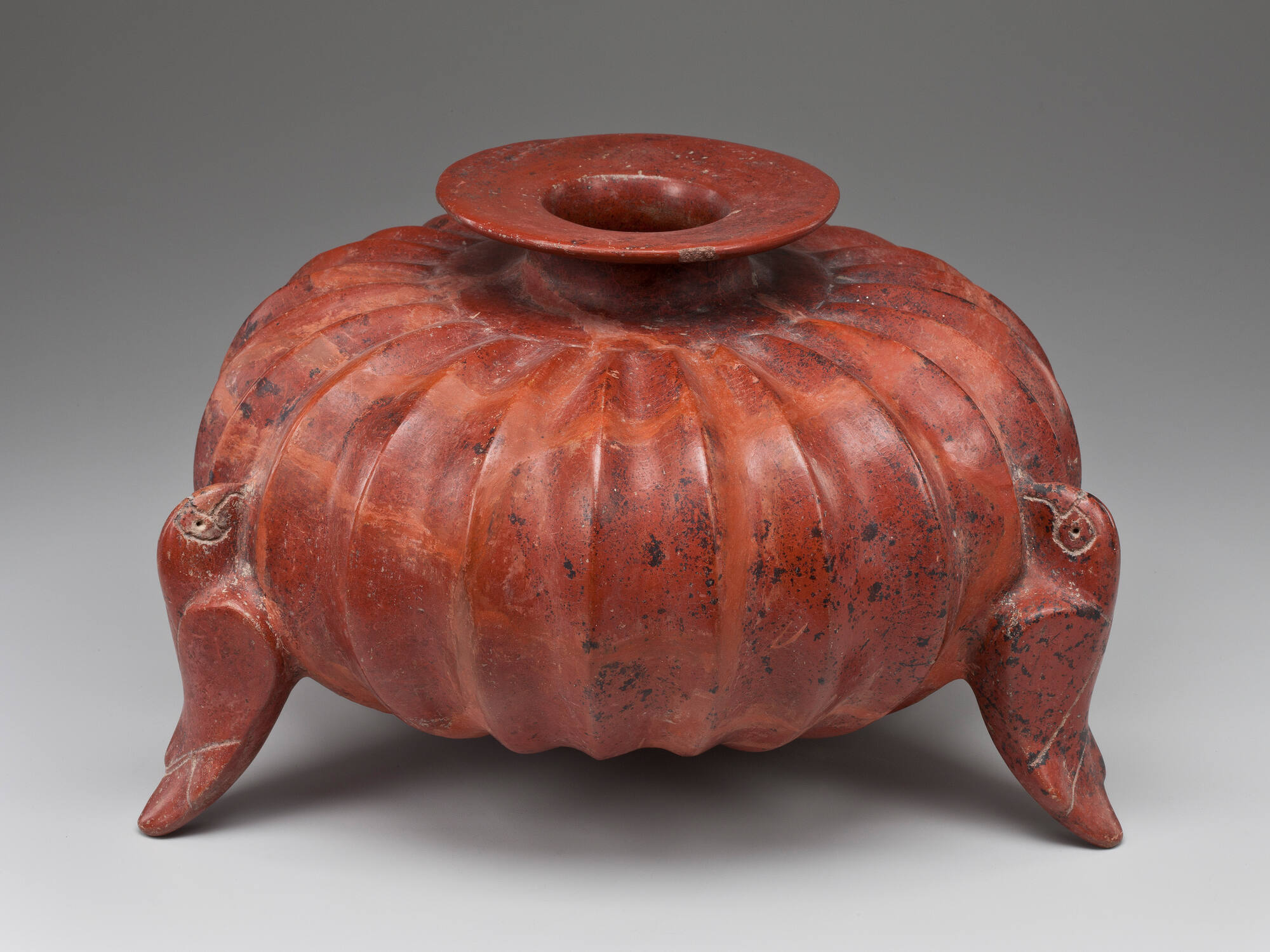
Object Details
Culture
Colima (Mexico)
Date
ca. 900-1300 A.D.
Medium
Burnished earthenware
Dimensions
Height: 8 3/4 inches (22.2 cm)
Diameter: 13 inches (33 cm)
Credit Line
Gift of Professor William J. Dress, PhD 1953
Object
Number
2003.043.005
Between about 500 BC and AD 500, potters in the region of western Mexico centered on the state of Co(…)
Between about 500 BC and AD 500, potters in the region of western Mexico centered on the state of Colima produced an astonishing array of large human figures and effigy vessels. The beautifully burnished red slip and elegant modeling of this vessel reflect the skill of Colima potters. Their effigy vessels are among the most finely crafted ceramics in the West Mexican tradition and often depict animals and plants that were economically and symbolically important. The parrot-shaped leg supports for this vessel are particularly engaging and reflect the sacred and high status of parrots due to their rarity. (“Highlights from the Collection: 45 Years at the Johnson,” curated by Stephanie Wiles and presented at the Johnson Museum January 27–July 22, 2018)WHERE WAS IT MADE?Colima potters lived and worked in the Western part of what is now Mexico.HOW WAS IT MADE?This vessel was likely hand-built with the coil method. In this method, a base is made by shaping clay into a flat disc. Then hand formed coils of clay, like ropes, are successively added to one another, building up the walls of the vessel. A tool such as a wooden paddle is used to smooth the sides both inside and out, leaving no trace of the coils. Tools were used to make the indentations of the lobes. The parrots were likely modeled by hand and attached separately. The vessel was burnished to a high polish prior to being fired in an earthen pit.HOW WAS IT USED?Vessels such as this were used to leave offerings of food for the dead, and have been found in shaft tombs. Ranging up to 6 meters in depth, these tombs consist of a chamber leading from a narrow vertical hole or shaft. Because these chambers were used to bury many people over long periods of time, it is likely that they were maintained and used by family groups. Tombs may contain hundreds of ceramic figures; among them, paired sets of matching male and female figures, perhaps representing married couples, are common.WHY DOES IT LOOK LIKE THIS?Vessels of this exact form are quite well known, and are sometimes very large in size, as in this example. Colima potters frequently made pumpkin or squash effigy vessels of this type, with deeply lobed sides, probably because squashes were one of their staple crops, along with beans and maize or corn. Notice the parrot-shaped legs supporting the squash. Parrots were considered sacred and were markers of high status, in part due to their rarity on the west Mexican coast. They were symbolically linked to the planet Venus and to the new corn harvest. Some bird species may have been imported from trading partners in Ecuador during pre-Columbian times, since the modern range of the painted jay and white-tailed jay includes only this area of West Mexico and modern Ecuador, which are separated by a distance of 4,000 km. Other pre-Columbian contacts between this area of west Mexico and Ecuador have been documented, although the claims have been challenged.To see another animal figure depicted in Colima pottery, a snake shaped vessel in the Johnson Museum’s collection, search for object number 2000.115 in the keyword search box.












